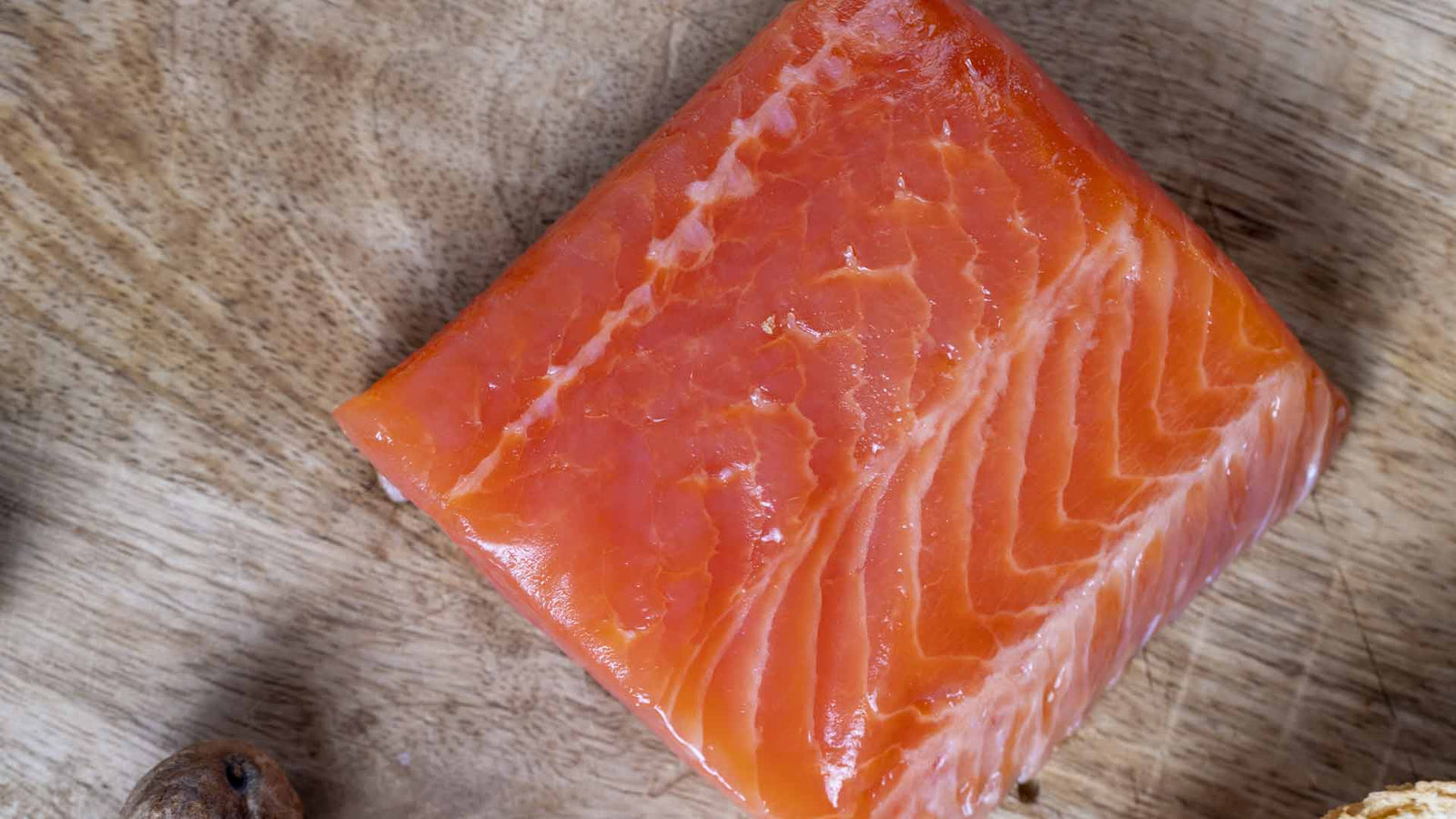
Halibut has become popular among seafood lovers and foodies for grounds of sustainability and nutrition. But there's one concern on everyone's mind: why is it so expensive? Let's examine halibut more closely and what makes it so pricey.
Let's get to know Wild Alaskan Halibut
Physiology
The Pacific halibut (Hippoglossus stenolepis) belongs to the 'flatfishes,' which provides us an idea of how it acts. Liketurbot, flounder, and sole, halibut is easily identified by its flat (laterally compressed), oval appearance—and the fact that both eyes are on the same (usually right) side of its head! Halibut swim sideways with their eyes on the upper half of their bodies.
Pacific halibut is also one of the biggest forms of flatfish, weighing up to 500 pounds! They may also grow to be over eight feet long and survive for a very long time. The oldest halibut on record was 55 years old, but they're typically harvested before then, meaning most don't reach an age over 25 years.
Geography
Pacific halibut, is found off the West Coast of the United States and around British Columbia and, predictably, Alaska. In reality, they are most typically seen around Kodiak Island in the central Gulf of Alaska. They can also be found in the seas along the coasts of Russia and Japan. Their spawning habitats are from northern California to the Bering sea.
The Food Chain
Halibut larvaeconsume zooplankton. They start consuming tiny fish and shelled creatures when they are one to three years old. Mature halibut are opportunistic feeders that will leave deeper waters and go to shallow nursery regions as young as two years old. They'll eat bigger species like sablefish, rockfish, sculpins, pollock, cod, turbot, and other flatfish here. Other forms of seafood, such as crabs, clams, and octopus, may also be ingested. Even smaller halibut will be consumed on occasion!
This should make it evident that halibut are towards the top of the food chain in most marine environments. The sole predators of halibut are orcas, sea lions, sharks, sand fleas (parasitic crustaceans), and, of course, humans.
Supply and Longevity
That's correct; we're one of the most severe dangers to halibut, particularly Pacific halibut.
We overharvested Pacific halibut in the early 1900s. Fortunately, numerous standards and rules are now in place to prevent this from happening again. To maintain healthy halibut populations, theInternational Pacific Halibut Commission (IPHC) tallies recreational and commercial harvests in the United States and Canada.
Wild-caught Pacific halibut is sustainably and ethically managed, thanks toFishery Regulations from organizations such as theIPHC and those enforced by the US government, and is regarded as a wise seafood option. Pacific halibut not only has above-target population numbers, but it has been increasing since 2013! Furthermore, the fishing gear used to collect Pacific halibut has little influence on the environment, including decreased bycatch levels.
Nutrition
Many people consider seafood a valuable dietary source due to its numerous nutritional advantages. Unfortunately, worries about mercury poisoning and sustainability sometimes cloud the picture, making it difficult for customers to determine whether to eat grilled or fried fish. However, the benefits significantly exceed the drawbacks when it comes to Halibut, especially Alaskan Halibut.
Selenium (a potent antioxidant), magnesium, phosphorus, niacin, vitamin B12, and vitamin B6 are all found in halibut. In fact, 6 ounces, or around160 grams of halibut, may cover more than a third of one's nutritional needs for a variety of minerals and vitamins, as well as protein and omega-3 fatty acids.
Taste
While it isn't as popular as shrimp,salmon. tuna, and tilapia, halibut is delicious and should be considered for a future supper. Halibut is a lean fish with a somewhat sweet and mild flavor, similar to tilapia. It has a harder texture than cod but a mild flavor, allowing it to easily absorb other tastes. Pan-seared, baked, grilled, slow-roasted, and other methods can be used toprepare halibut. It's a tasty and diverse form of sustainable seafood!
What makes halibut so expensive?
Unfortunately, the seafood supply chain, like the food supply chain in general, is susceptible to price increases. In 2021, this made halibut, in particular, more expensive. Recently, prices for halibut have risen by up to 50% due to worker shortages, a lack of fishers, and transportation issues—all of which are coupled with an increase in demand.
It's important to consider that the fishing industry is still bouncing back from pandemic-related difficulties. Many involved in the industry were forced to seek other employment opportunities when demand dropped in 2020, and some of them have yet to return to fishing.
Why do people prefer Alaska halibut over Atlantic halibut?
First and foremost, they are two distinct species. The Atlantic halibut (Hippoglossus hippoglossus) is also a flatfish—in fact, it is the biggest flatfish species. It may grow to be up to 15 feet long and 700 pounds in weight. Atlantic halibut, like its Pacific cousin, may have a long life, with an average lifespan of roughly 50 years.
However, unlike the Pacific or Alaskan halibut stocks, the Atlantic halibut stock is depleted. Unfortunately, its population level is only 3% of its desired level! The majority of Atlantic halibut in the United States are located in the Gulf of Maine, where prevalent fishing tactics include trawling, which has also been linked to detrimental habitat consequences and bycatch.
The Environmental Defense Fund's Seafood Selector gives Pacific (Alaskan) halibut the green light (the highest eco-rating), whereas Atlantic halibut gets the red light (the worst eco-rating). Overall, there are several advantages to eating Pacific halibut. It's delicious, healthful, and long-lasting. If you have a craving for halibut, Alaska is the place to go (along with tasty Alaskan salmon, of course).
We are offering 20% discount on Wild Alaskan Halibut. Hurry up before the stock runs out.

